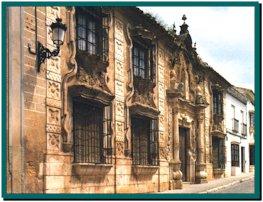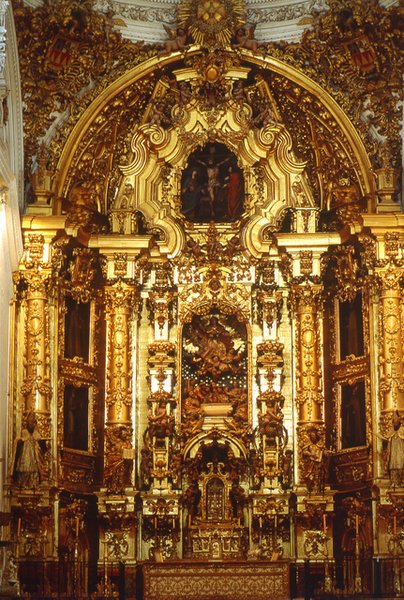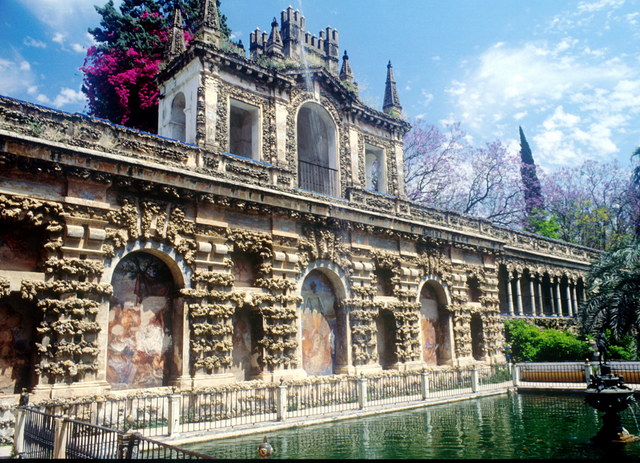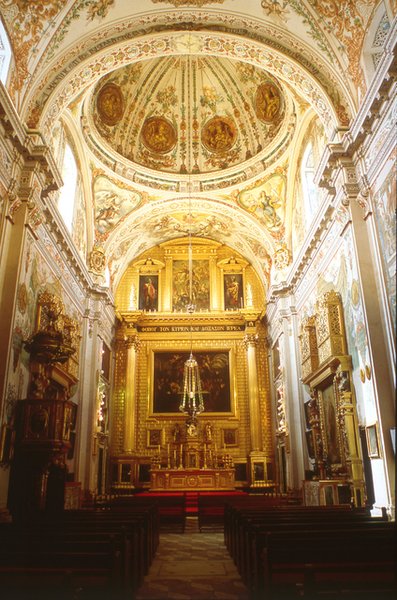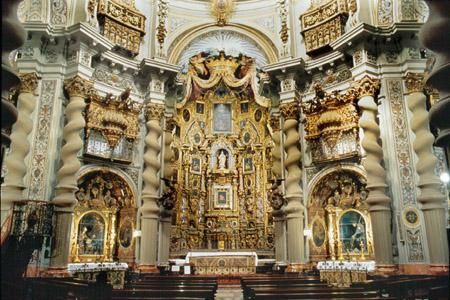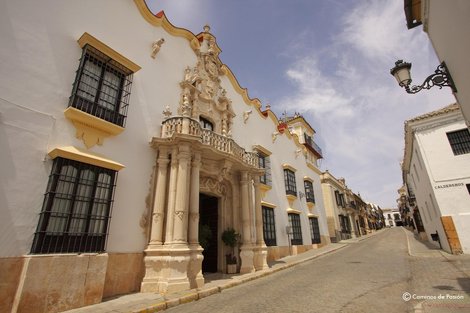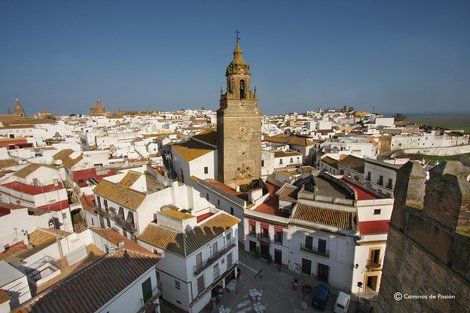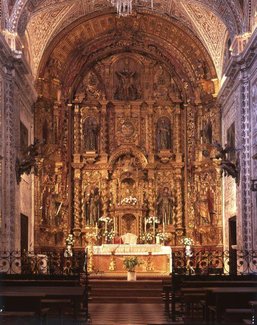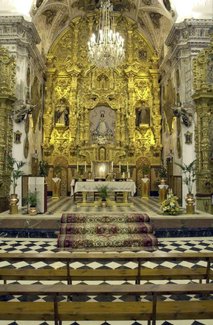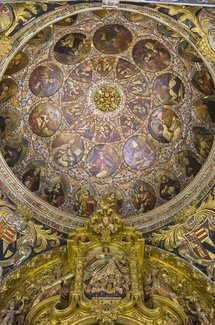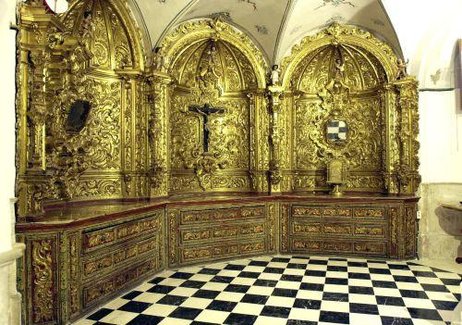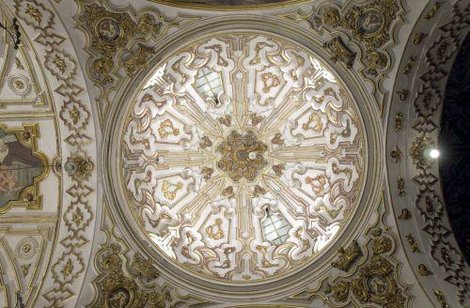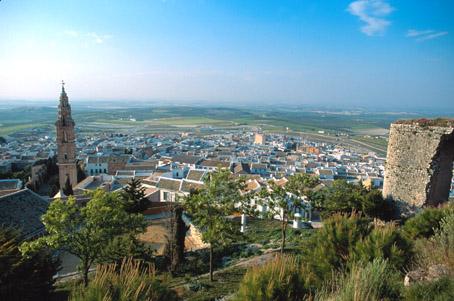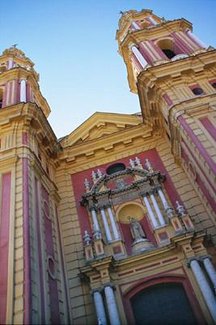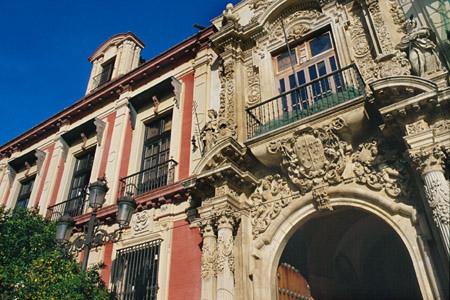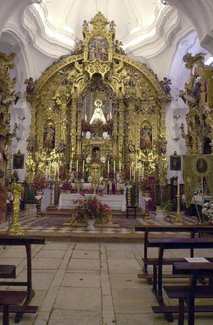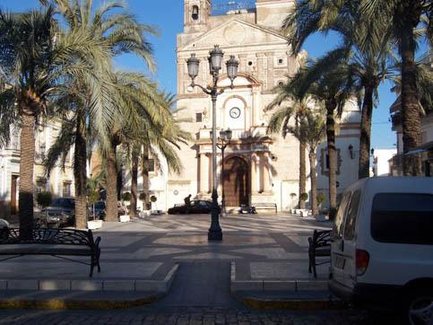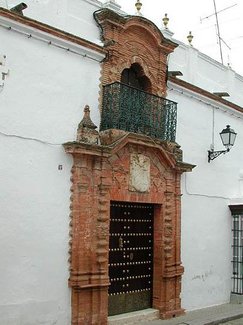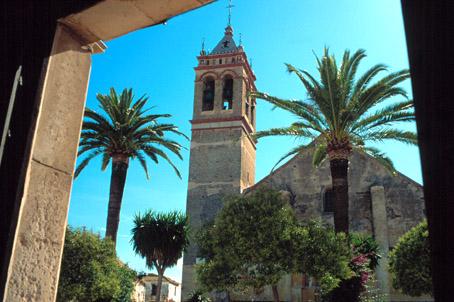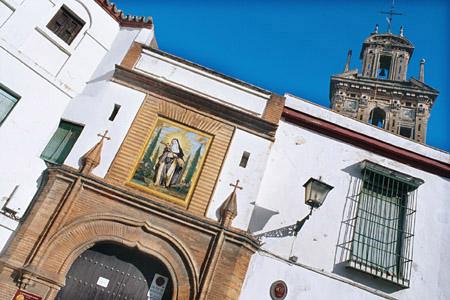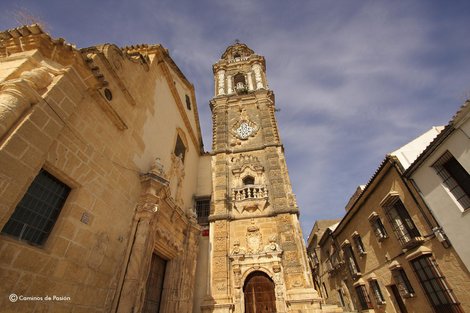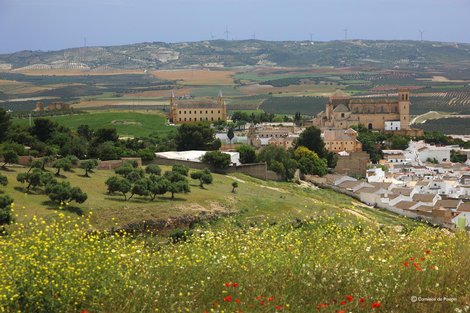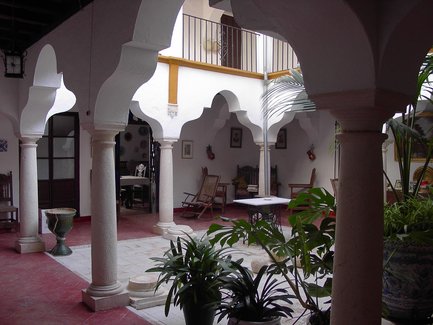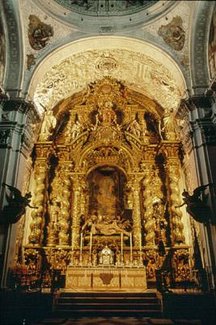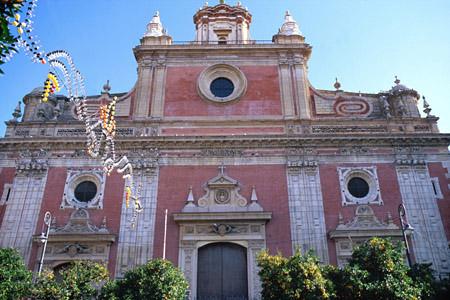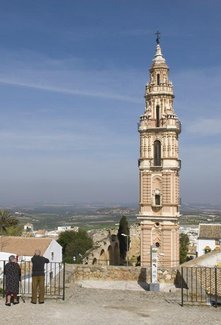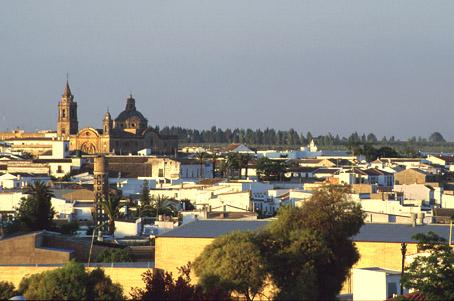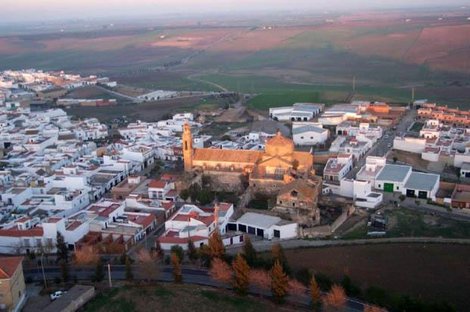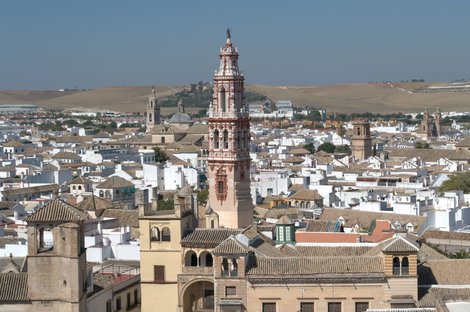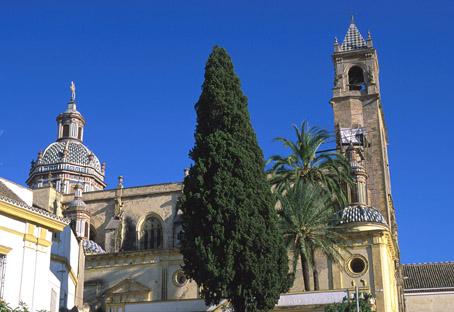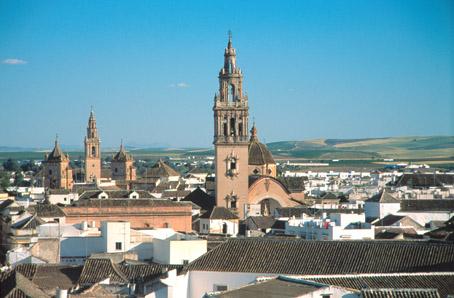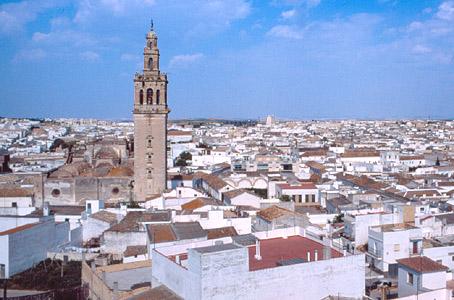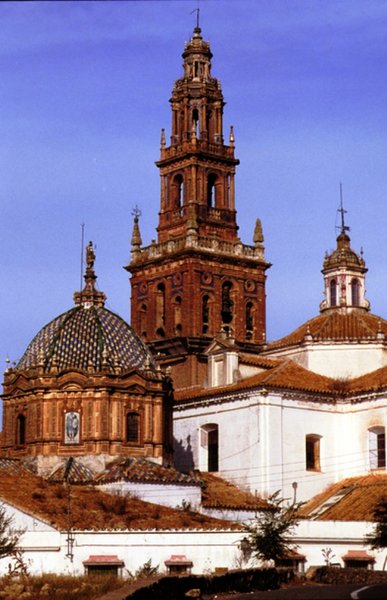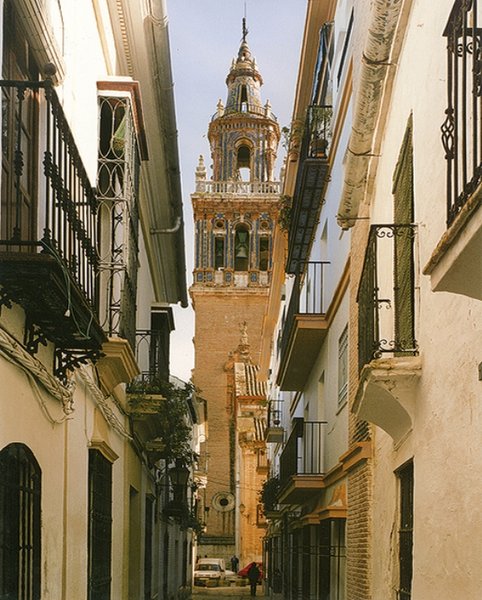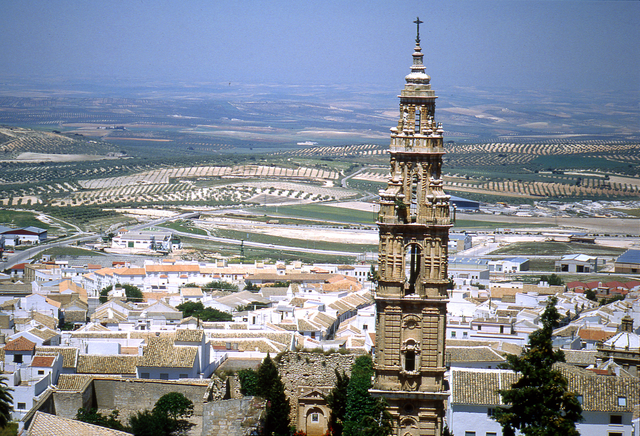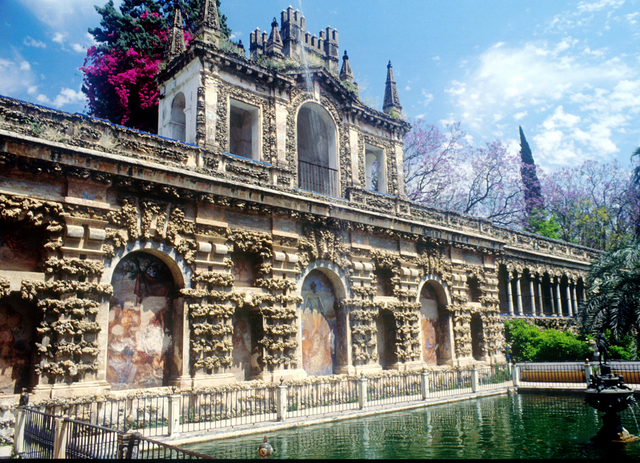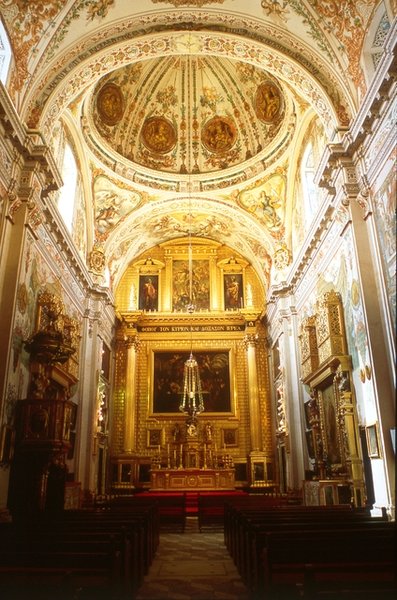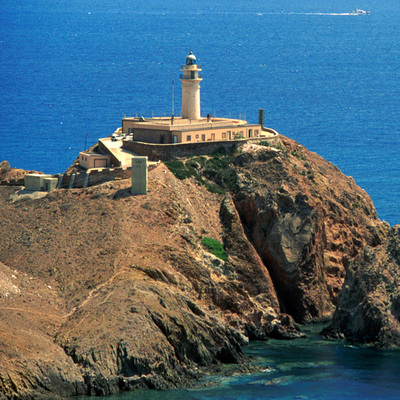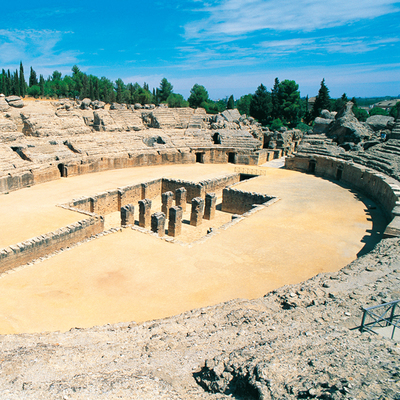Seville

Fundamental point of Andalusian baroque - that could be named "brick baroque", for the predominance of this material - this route includes Seville, paradigm of the convent-cities (over one hundred religious buildings were put up in the 17th century) and the larger towns of the countryside: rich municipalities where the baroque style generated some spectacular sights.
An essential itinerary in Seville could begin in the Convent of La Merced (Fine Arts Museum - Juan de Oviedo), and continue with the Hospital de La Caridad (linked to the well-known name of Miguel de Mañara, with work by P. Sánchez Falconete).
The old convent of Los Terceros (magnificent staircase), the Hospital of Los Venerables, the Churches of El Salvador and San Luis, the Palace of San Telmo are all works by L. de Figueroa. The tour might finally finish up in the Tobacco Factory (now the University), the great industrial building of 18th century Seville.
There is still more for those who wish to continue: the Convent of Santa Clara, the Churches of San Benito, La Trinidad, El Soprano, San Buenaventura, Santa María la Blanca, La Magdalena, Santa Catalina, El Buen Suceso, San Jacinto, San Roque, San Bartolomé, San Bernardo or San Ildefonso, the old Convent of San Acacio, Hospital of San Juan de Dios, Chapel of San José, the magnificent altarpieces of the convents of Santa Paula and San Clemente (Martinez Montañes and Felipe de Rivas), and the entrance door to the choir in the Cathedral (D. Antonio Diaz).
Under civilian architecture, there is the Archbishop´s palace, the gardens of the Alcázar (El León fountain, Grutescos gallery), the Maestranza bullring or the Fundición de Artillería.
Near Seville, Umbrete has a remarkable parish church and Archbishop´s Palace. Carmona, a notable urban spectacle when viewed from a mirador, has the Churches of Santa Clara and Madre de Dios (redecorated in the first half of the 17th century), the Hospital of La Caridad (façade) and the Churches of San Pedro, Las Angustias, El Salvador and La Trinidad.
Before reaching Ecija, we pass through Lora del Río (Church of Jesús Nazareno and town hall), Peñaflor (Church of San Pedro), La Campana (parish church) and Fuentes de Andalucía (parish church, Churches of San Sebastian, San Francisco and La Merced, granary).
Ecija is known as the "City of the Towers" and has many lovely houses: Palace and Casa Mirador of the Marquess of Peñaflor, Palace of the Count of Valverde, Fuente de la Ninfa and Los Peces, and above all, many remarkable churches: Churches of Los Carmelitas, Santo Domingo, Santa Maria, Santiago, San Gil, Santa Ana, Santa Cruz and San Juan. Estepa has some interesting churches (El Carmen, Los Remedios, La Victoria and San Sebastián). Osuna is an inevitable stopping place and worthwhile.
The street of San Pedro is most remarkable for its houses, among which the Cilla stands out (Ruiz Florindo), as does the Palace of the Marquess de la Camera, the house of the Count of Cepeda, the Churches of the Hospital of La Misericordia and of the convent of Santa Catalina and, above all, the convent of la Encarnación, with its cloister of lovely tiles.
Marchena (Ducal Square, Churches of San Sebastian and San Juan), Morón (parish church and Church of San Miguel), Utrera (façades of the Churches of Santiago and Santa María), Las Cabezas de San Juan (church of San Juan Bautista), and Lebrija (church of La Oliva and Cilla del Cabildo).

